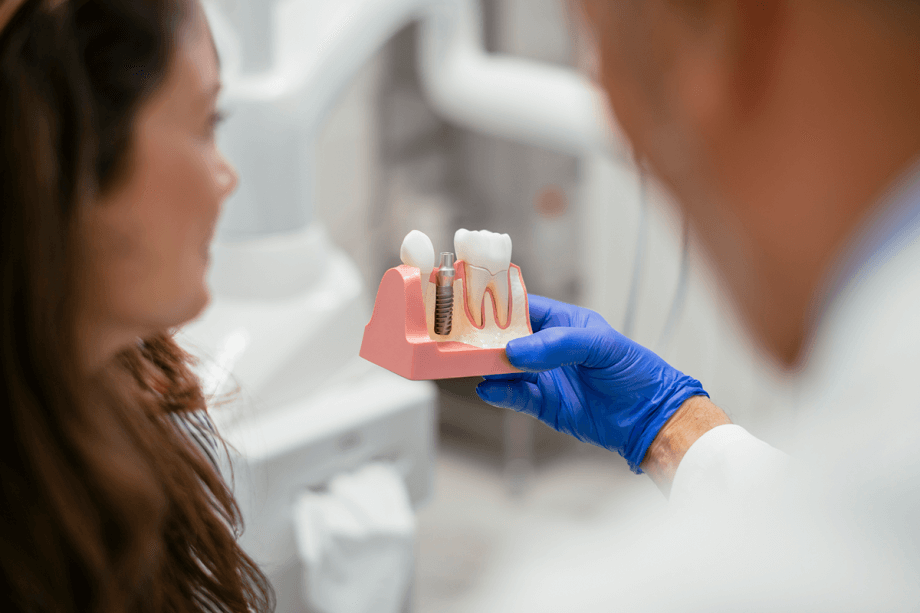Are you considering getting a dental implant? Dental implants are the top of the line tooth replacement option. An implant can completely replace a tooth, including the root, giving you the look and function of a natural tooth. Implants are strong and stable with the same bite strength as a healthy tooth.
Whether you’re still deciding or you’re sure a dental implant is what you want, it may help to have an overview of the dental implant process. Here’s what you can expect every step of the way.
Step 1: The Consultation
The first step in any dental procedure is always a consultation. Your dentist will perform a thorough oral examination to determine if you are an ideal candidate for a dental implant. This process may also involve X-Rays to determine bone density in the jaw. You and your dentist will discuss all of the potential options for replacing your tooth and you will decide together what is the best course of treatment.
Step 2: Preparation
Once it is determined that you will be getting a dental implant, the next steps are in preparation for the implant. First, if you have a decayed or damaged tooth that needs to be removed, the extraction process will take place first. Once the tooth is removed, there may need to be some healing time before the dental implant is placed.
If it was determined during your consultation that there is not sufficient jaw bone to support an implant, you may need a bone graft procedure first. A bone graft involves surgically placing a piece of bone (either artificial, animal, or a bone fragment from your own body) under the gums on top of the existing jaw bone. The bone graft will fortify the jaw bone in the area where the implant is to be placed and can even help the existing bone to regenerate.
Step 3: Placing the Implant Root
The next step is placing the implant root, which is a titanium post that will be surgically inserted under the gum tissue, directly in the jaw bone. The implant will need a few weeks to fuse with the jaw bone before it is ready. Titanium is a biocompatible metal that forms a solid bond with the existing bone. Once an implant has fused into place, it is strong enough to last a lifetime.
Step 4: Attaching the Abutment
After the implant root has had time to bond with the jaw bone and your gum tissue has healed, the abutment can be attached. This is the stem that extends above the gum line for the crown to attach. The placing of the abutment requires the gum tissue to be reopened while it is attached and then closed back around it. A few more weeks will be allowed for healing before the permanent crown is placed.
Step 5: Placing the Permanent Crown
Once the gum tissue has healed and the implant root is fully fused, a permanent crown will be attached to the abutment. The crown is carefully crafted to match your existing teeth in size, shape, and color for a natural look.
Once the final step is complete you may have a follow up appointment to make sure the implant is sturdy and that sufficient healing has taken place. But from here on you will only need to visit your dentist for regular teeth cleaning and exams.
Kensington Natural Smiles Provides Dental Implant Services
If you’re looking for a dentist with plenty of experience with dental implants, Dr. Susan Ho at Kensington Natural Smiles is an excellent choice. Dental implants can last a lifetime with proper placement, so the dentist you choose matters. If you’re going to invest in your dental health, you want to be sure it is a lifelong, worthwhile investment. When you choose Kensington Natural Smiles, you can rest assured that your time and money is well spent.
Call 301-933-3903 today to schedule a consultation or request an appointment. We look forward to providing you with the best tooth replacement option.

